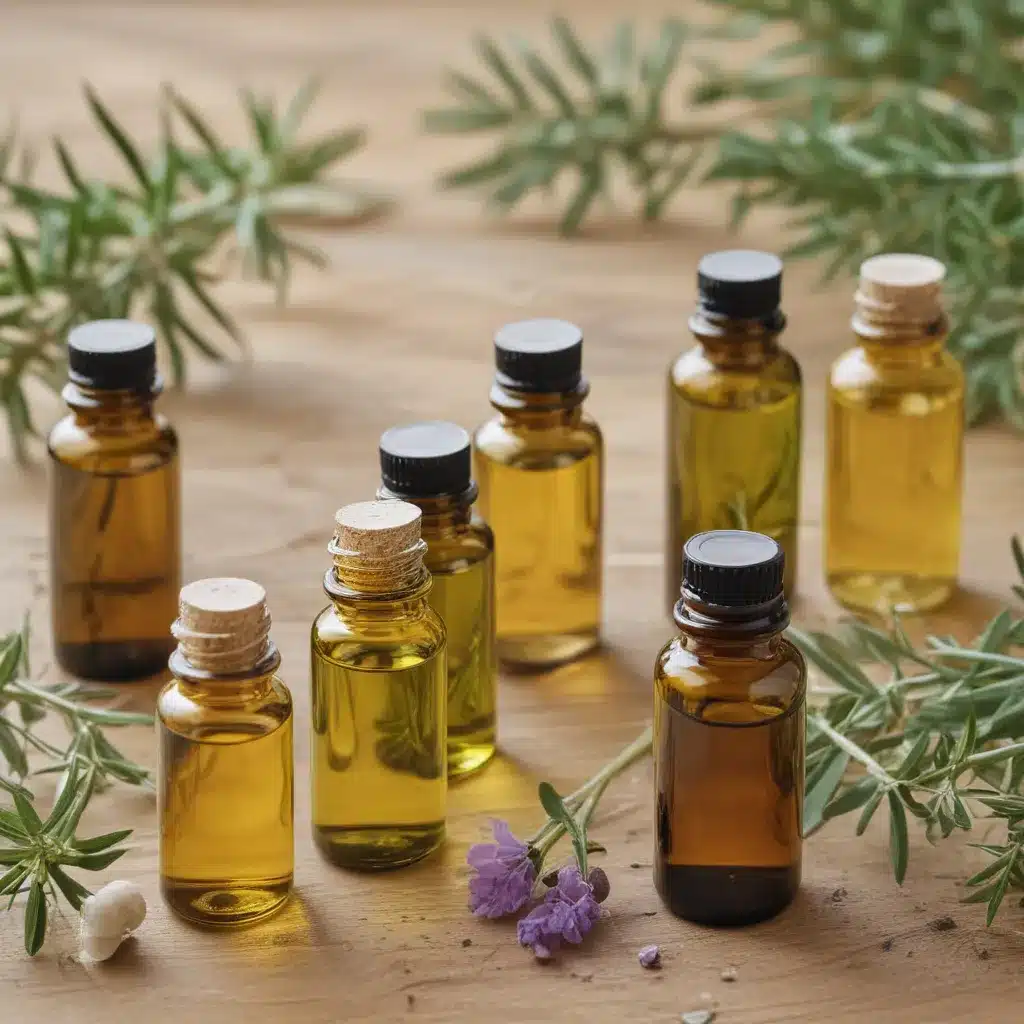
As I watched my elderly dog find relief from joint discomfort through the gentle massage with lavender essential oil, I realized the power of these natural remedies for pets. However, the world of essential oils for pets can be complex, and ensuring their safe usage is paramount. From understanding pet sensitivities to selecting the right oils and application methods, there’s much to ponder. But fear not, as I guide you through the dos and don’ts of incorporating essential oils into your pet’s life, ensuring their well-being and happiness.
Benefits of Essential Oils for Pets
Using essential oils for pets can enhance their overall well-being and promote a sense of calm. Aromatherapy benefits are well-known for their soothing effects on animals, helping them relax and reduce anxiety. Essential oils like lavender, chamomile, and frankincense can be diffused in the air or diluted for topical application to aid in pet relaxation. These oils have calming properties that can positively impact pet behavior, especially in stressful situations like thunderstorms or vet visits.
The benefits of essential oils for pets extend beyond just relaxation. They can also help in managing certain health conditions. For example, lavender oil is believed to have antibacterial and anti-inflammatory properties, which can be beneficial for pets with skin irritations. Peppermint oil may aid in relieving nausea and boosting energy levels in pets.
Remember that not all essential oils are safe for pets, so consulting with a veterinarian before using them is important. Some oils can be toxic to certain animals, especially cats and birds. Always dilute essential oils properly and observe your pet for any signs of sensitivity or adverse reactions. With the right precautions, incorporating essential oils into your pet’s routine can be a natural way to enhance their well-being and promote a harmonious environment.
Understanding Pet Sensitivities
I’ll begin by shedding light on common pet allergy triggers and how pets can be sensitive to different scents. Understanding these sensitivities is important when using essential oils around pets to guarantee their well-being and comfort. By being aware of potential triggers and sensitivities, pet owners can make informed decisions when incorporating essential oils into their pets’ routine.
Pet Allergy Triggers
Understanding pet sensitivities involves recognizing the various triggers that can cause allergic reactions in our beloved furry companions. Pet dander, a common allergen, consists of tiny flecks of skin shed by animals with fur or feathers. To help you create an allergy-free environment for your pets, here are some essential tips:
| Allergy Trigger | Description | Prevention |
|---|---|---|
| Pet Dander | Shed skin particles | Regular grooming |
| Allergies | Sensitivity to substances | Clean bedding regularly |
| Allergy-Free Pet Care | Preventing allergic reactions | Vacuuming carpets frequently |
Sensitivity to Scents
To safeguard our pets’ well-being, it’s important to be mindful of their sensitivity to scents, a factor that plays a significant role in understanding their overall sensitivities. Understanding pet scent sensitivity management can help create a harmonious environment for our furry friends. Here are some essential points to bear in mind:
- Pet behavior: Pay attention to how your pet reacts to different scents. Some pets may become agitated or anxious in the presence of strong odors.
- Aromatherapy precautions: Be cautious when using essential oils around pets, as their sense of smell is much stronger than ours, and certain oils can be harmful to them.
- Odor tolerance: Just like humans, pets have varying levels of tolerance to different scents. Respect your pet’s preferences and avoid overwhelming them with overpowering fragrances.
Choosing Pet-Safe Essential Oils
Choosing essential oils that are safe for your pets is important to ensuring their well-being and avoiding potential harm. When selecting oils for your furry friends, it’s vital to choose pet-friendly options and apply them using safe techniques.
Opt for pet-friendly oils like lavender, chamomile, and frankincense, as these are generally safe for use around animals. Always make sure to use high-quality, pure essential oils to minimize the risk of adverse reactions. Avoid oils that are toxic to pets such as tea tree, cinnamon, and citrus oils.
To guarantee safe application, it’s crucial to dilute the essential oils properly before using them on your pets. This helps to prevent skin irritation and other negative effects. When applying oils topically, always mix them with a carrier oil like coconut or olive oil. Additionally, it’s vital to observe your pet for any signs of sensitivity or discomfort after using the oils.
When diffusing essential oils around pets, make sure the area is well-ventilated, and your pet has the option to leave the room if they desire. Remember that pets have a more sensitive sense of smell than humans, so it’s best to use a minimal amount of oil when diffusing.
Methods of Application
When applying essential oils to pets, it is essential to contemplate various methods of application to guarantee their safety and effectiveness. Here are three key methods to take into account:
-
Topical Application: This method involves applying essential oils directly to your pet’s skin. It is important to dilute the essential oils properly before using them topically on pets. Always perform a patch test on a small area of your pet’s skin to check for any adverse reactions before applying the oil more extensively. This method is great for targeting specific areas or providing localized relief.
-
Inhalation: Inhalation is another effective way to use essential oils with your pets. You can add a few drops of diluted essential oil to a diffuser to allow your pet to inhale the aromatic mist. This method is especially useful for addressing respiratory issues or for calming anxious pets.
-
Massage: Massaging your pet with diluted essential oils can help promote relaxation, relieve muscle tension, and strengthen the bond between you and your furry friend. When massaging your pet, make sure that the essential oils are well-diluted and that you use gentle, pet-safe techniques. This method not only allows for the absorption of oils through the skin but also provides a comforting and soothing experience for your pet.
Dilution Guidelines
When it comes to using essential oils for pets, understanding proper dilution ratios is vital to guarantee their safety and effectiveness. Additionally, there are important safety precautions to bear in mind, such as avoiding certain oils that can be toxic to pets or causing skin irritation if not diluted correctly. By following dilution guidelines and taking necessary precautions, pet owners can harness the benefits of essential oils for their furry friends in a safe and responsible manner.
Proper Dilution Ratios
Maintaining the proper dilution ratios is important when using essential oils for pets to guarantee their safety and well-being. Dilution techniques and measuring accuracy play a vital role in ensuring that the essential oils are gentle yet effective for our furry friends. Skin absorption is rapid in pets, so using the right dilution ratios helps prevent any potential toxicity concerns. Here are some key points to keep in mind:
- Always dilute essential oils with a carrier oil before applying them to your pet’s skin.
- Follow recommended dilution ratios provided by reputable sources or veterinary professionals.
- Be cautious and start with lower concentrations, especially with smaller pets, to avoid any adverse reactions.
Maintaining correct dilution ratios is essential for the safe use of essential oils on pets.
Safety Precautions to Consider
To guarantee the safe use of essential oils on pets, it is important to adhere to specific safety precautions, including following proper dilution guidelines. Proper application of essential oils involves diluting them with a carrier oil before use. The recommended dilution ratio for pets is typically 0.25% to 0.5%, which equates to 1 to 2 drops of essential oil per 4 teaspoons of carrier oil. This careful dilution helps prevent adverse reactions and ensures the effectiveness of the oil without overwhelming your pet’s sensitive system. Ignoring dilution guidelines can pose potential risks to your pet’s health, such as skin irritation, digestive issues, or respiratory problems. Always prioritize the safety of your furry friend by diluting essential oils appropriately before application.
Monitoring Pet’s Reaction
Observing your pet’s reaction to essential oils is essential to guarantee their well-being and safety. As a responsible pet owner, it is vital to monitor how your furry friend responds to the introduction of essential oils. Here are some key points to to consider when observing your pet’s reaction:
-
Reaction Monitoring: Keep an eye out for any unusual symptoms that may indicate a negative response to the essential oils. Symptoms to watch for include excessive drooling, vomiting, diarrhea, lethargy, or difficulty breathing. If you notice any of these signs, it is vital to stop using the essential oils immediately and seek guidance from a veterinarian.
-
Behavior Changes: Pay close attention to your pet’s behavior after being exposed to essential oils. Signs of discomfort can manifest in various ways, such as restlessness, pacing, hiding, or aggression. Any significant behavior changes should be noted and taken seriously to to ensure your pet’s well-being.
-
Seek Professional Advice: If you have any doubts or concerns about your pet’s reaction to essential oils, do not hesitate to consult with a veterinarian. They can provide expert guidance tailored to your pet’s specific needs and help you navigate the safe usage of essential oils for your furry companion. Remember, your pet’s health and safety should always be the top priority.
Safely Introducing New Oils
When introducing new oils to your pet, it is important to proceed with caution and attentiveness to guarantee their safety and well-being. I recommend introducing oils slowly to observe how your pet reacts. Begin by selecting one oil at a time and using it in a diluted form. This allows you to monitor their reaction and make sure they do not have any sensitivities or adverse effects.
A gradual introduction is key to understanding how your pet responds to the new oil. Start by diffusing a small amount in a well-ventilated area and observe your pet’s behavior closely. Look for signs of discomfort, such as excessive sneezing, coughing, or changes in activity levels. If your pet shows any signs of distress, immediately remove them from the area and discontinue use of the oil.
Monitoring your pet’s reactions is critical throughout the introduction process. Keep a close eye on them for any changes in behavior, appetite, or energy levels. Remember, every pet is unique, and what works for one may not work for another. By observing your pet’s responses and adjusting accordingly, you can make sure a safe and positive experience when introducing new oils.
Avoiding Toxic Essential Oils
I’ll be highlighting important information on the toxicity risks associated with certain essential oils for pets, as well as suggesting pet-safe alternatives. Understanding which essential oils can be harmful to our furry companions is essential for their well-being. By being aware of these risks and choosing safer alternatives, we can create a pet-friendly environment that promotes their health and happiness.
Toxicity Risks
To prevent harm to your beloved pets, it is important to be aware of and avoid essential oils that pose toxicity risks. Some prevention measures to keep in mind include:
- Research: Always research the essential oil before using it around your pets. Some oils that are safe for humans can be toxic to animals.
- Consultation: When in doubt, consult with a veterinarian who is knowledgeable about essential oils and their effects on pets.
- Proper Dilution: If using essential oils around pets, make sure they are properly diluted as their sense of smell is much stronger than ours, and concentrated oils can be overwhelming and potentially harmful to them.
Being cautious and informed about the toxicity risks associated with certain essential oils can help make sure the safety and well-being of your furry companions.
Pet-Safe Alternatives
Being aware of toxic essential oils is important to the safety of pets, so exploring pet-safe alternatives becomes paramount to ensuring their well-being. Natural remedies offer a safe and effective way to enjoy the aromatherapy benefits without risking harm to our furry friends. Opt for oils like lavender, chamomile, and frankincense, which are known for their calming and soothing properties. These pet-safe alternatives can help reduce stress, anxiety, and even aid in physical discomfort. When using essential oils around pets, always dilute them properly and observe for any adverse reactions. By choosing natural remedies and understanding the aromatherapy benefits they offer, we can create a harmonious environment that promotes wellness for both our pets and ourselves.
Essential Oils for Common Pet Issues
Exploring the benefits of essential oils for common pet issues can provide natural solutions for your furry companions’ well-being. When used correctly, essential oils can be a powerful tool to address various pet concerns. Here are some common pet issues where essential oils can offer support:
-
Anxiety and Stress Relief: Essential oils like lavender, chamomile, and frankincense are known for their calming properties. By diffusing these oils or using them in a pet-friendly spray, you can help alleviate your pet’s anxiety during thunderstorms, fireworks, or other stressful situations.
-
Skin Irritations: Tea tree oil and lavender oil are excellent natural remedies for soothing skin irritations in pets. Diluted properly, these oils can be applied topically to help with itching, inflammation, or minor skin infections.
-
Flea and Tick Prevention: Certain essential oils like cedarwood, lemongrass, and peppermint have insect-repelling properties. Mixing these oils with a carrier substance and applying it to your pet’s collar or bedding can help deter fleas and ticks without the use of harsh chemicals.
Consultation With Veterinarian
Consult your veterinarian before incorporating essential oils into your pet’s care routine to guarantee their safety and suitability for your pet’s specific needs. When considering alternative therapies or natural remedies like essential oils for your pet, it’s important to consult a professional to make sure you are making choices that will benefit your furry friend. Veterinarians have the expertise to guide you on the safe and appropriate use of essential oils, taking into account your pet’s individual health conditions, species-specific sensitivities, and potential interactions with any medications they might be on.
To provide a visual representation of the importance of consulting with a veterinarian before using essential oils on pets, let’s consider the following comparison:
| Consulting with Veterinarian | Not Consulting with Veterinarian |
|---|---|
| Ensures safety and suitability for pet’s needs | Risk of adverse reactions or harm to pet |
| Professional guidance on proper usage | Lack of expertise in pet healthcare |
| Tailored advice based on pet’s health conditions | Potential misuse leading to health issues |
| Prevents interactions with medications | Unpredictable effects on pet’s health |
Creating a Pet-Safe Environment
Creating a pet-safe environment involves identifying and removing potential hazards that could harm your furry companion. When it comes to guaranteeing your pet’s safety at home, understanding their behavior and making necessary household adjustments are key. Here are three essential steps to establish a safe space for your beloved pet:
-
Understanding Pet Behavior: Take the time to observe how your pet interacts with different areas of your home. Note any specific behaviors they exhibit, such as chewing on wires, knocking over objects, or trying to access certain areas. By comprehending your pet’s behavior, you can proactively address potential risks and prevent accidents before they happen.
-
Making Household Adjustments: Once you have identified potential hazards based on your pet’s behavior, make the necessary adjustments to eliminate or minimize these risks. This may include securing loose wires, using pet-friendly plants, storing chemicals and medications out of reach, and creating designated safe zones where your pet can relax without any dangers.
-
Creating a Safe Haven: Designate a cozy space in your home where your pet can retreat to feel safe and secure. This area should be free of loud noises, potential hazards, and high foot traffic. By providing a safe haven for your pet, you can help reduce their stress levels and guarantee they have a comfortable place to relax and unwind.
Storage and Handling Tips
When storing and handling essential oils for pets, it is important to prioritize safety measures to prevent any accidental exposure or ingestion by your furry friends. Proper storage and safe handling are vital to guarantee the well-being of your pets. Here are some storage tips and handling precautions that I recommend:
| Proper Storage | Handling Precautions |
|---|---|
| Keep oils in a secure cabinet or shelf out of pets’ reach | Avoid applying oils directly onto pets |
| Store oils in dark glass bottles to prevent degradation | Wash your hands after handling oils to prevent accidental transfer to pets |
| Ensure lids are tightly closed to prevent spills or leaks | Use a carrier oil to dilute essential oils before applying |
| Keep oils away from heat and sunlight to maintain their potency | Monitor your pet for any signs of sensitivity or adverse reactions |
Taking these storage tips and handling precautions seriously can help create a safe environment for your pets when using essential oils. Always remember that our furry companions are sensitive to many substances, so extra care and attention to detail are essential when incorporating essential oils into their routine. By following these guidelines, you can enjoy the benefits of essential oils while keeping your pets safe and healthy.
Essential Oil Safety Tips
To guarantee the safety of your pets when using essential oils, it is important to understand and implement proper essential oil safety tips. Here are some essential guidelines to make sure the well-being of your furry friends:
-
Proper Usage: Always dilute essential oils before applying them to your pets. Different animals have varying sensitivities, so it is important to follow recommended dilution ratios. Additionally, avoid applying oils near sensitive areas like the eyes, nose, mouth, and genitals.
-
Potential Hazards: Some essential oils can be toxic to pets if ingested or absorbed in large amounts. Be cautious with oils such as tea tree, peppermint, and wintergreen, which can be harmful to animals. Keep oils stored securely and out of reach of curious pets to prevent accidental ingestion.
-
Aromatherapy Benefits: While essential oils can offer aromatherapy benefits to pets, it is important to introduce them gradually and observe how your pet reacts. Watch for signs of discomfort, allergies, or aversion. Remember that each pet is unique, and what works for one may not work for another.
Conclusion and Final Thoughts
Moving forward from the discussion on essential oil safety tips, it is imperative to contemplate a thoughtful conclusion and final thoughts regarding the use of essential oils for pets. Final reflections on using essential oils for pets should always prioritize the well-being of our furry companions. When considering the usage tips discussed earlier, it is vital to remember that not all essential oils are safe for pets, and even those deemed safe should be used sparingly and with caution.
In closing, best practices for using essential oils with pets involve diluting them properly, using them in well-ventilated areas, and observing your pet for any signs of distress or discomfort. Additionally, always consult with a veterinarian before introducing essential oils into your pet’s environment, especially if your pet has underlying health conditions or is pregnant.
In essence, while essential oils can offer benefits for pets when used correctly, it is essential to approach their usage with care and mindfulness. By following the usage tips and incorporating these closing thoughts into your pet care routine, you can create a safe and enjoyable experience for both you and your beloved pet.
Conclusion
To sum up, essential oils can be a wonderful addition to your pet’s holistic care routine when used safely and responsibly. By understanding your pet’s sensitivities, choosing pet-safe oils, and following proper dilution and application methods, you can create a calming and beneficial environment for your furry friend. Remember, a little goes a long way, so start small and see how your pet responds. Here’s to happy and healthy pets!





















